Off-grid living is something that many of us aspire to. Not only does it provide for excellent self-sufficiency and sustainability living in a post-disaster world, but it allows us a most cost-effective and sustainable lifestyle in the here and now. Of course, different people have different reasons for going off-grid, but the end result and the process one must go through are more or less the same.
I’m not talking about living in a world without an electric grid here, nor am I talking about a world where you can’t produce your own electricity. One of the central components of off-grid living is the ability to produce your own electric power. Granted, you would probably be limited in how much electric power you could produce, but you could produce it.
Let me be clear about that. I looked into the prospects of converting to 100% solar power, or at least a reasonable facsimile of it, in my previous home. It was going to cost $60,000. That was without any battery backup system, and depending on the electrical grid to act as my “battery,” providing power when I didn’t produce enough and buying excess power off me, when I was producing too much. While I really don’t like that sort of system, I got bids anyway, simply to have a better understanding of the cost.
Related: How to Build Your Own Solar Panels
A true off-grid system would mean no connection whatsoever to the grid. The only electric power you would have would be that which you produce, just like the only water you would have is that which you harvest from nature. Considering the cost I mention above, that probably means a limited amount of electricity.
With that as a basis, energy efficiency is an important factor. It would be unrealistic to think that one could use massive power tools and air conditioning 24/7. Rather, the usage of either would have to be limited, replacing them as much as possible with other, non-electric alternatives.
Based on that, there are a number of things we would have to consider and a number of specialty tools that we would have to have, in order to live our lives. Some could be gasoline powered, as that wouldn’t break the “rules of living off-grid.” But obviously, you wouldn’t want to run those tools 24/7, as that would be more expensive than being on the grid.
Off-Grid Electricity
This isn’t an article about producing your own electricity, so I’m not going to get into a lot of detail about it. I just want to mention that off-grid living requires not only the ability to produce your own electric power and water; it also requires the means of storing it. You’re obviously going to need solar panels, a wind turbine and a battery backup. Make sure your battery backup is big enough to meet your needs.
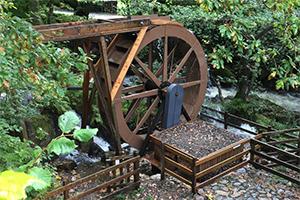
If you can, hydropower is better and more reliable than either wind or solar. But that requires having a river or stream on your property or bordering your property. It will also probably require getting the appropriate permits from the appropriate government agencies. But if you can, you’ll have a much more reliable means of producing electricity, than either wind or sun can provide.
There is one major thing I want to mention here, about producing your own electric power. That is, you will be depending on unreliable power sources. The big problem with “green energy” is that the most popular forms of green energy production, wind and solar, are unreliable, because the sun doesn’t always shine and the wind doesn’t always blow. So you need to have a backup plan for just about everything, especially anything that will require the use of whatever electric power you produce.
Related: Turning Fire into Electricity (BioLite Camp Stove)
Keeping Cooking in the Kitchen
While we don’t normally think of it as such, one of our biggest areas of tool use is in the kitchen. All of the appliances there are tools, as well as many utensils used in cooking. While I’m sure that you could use at least some of them in an off-grid lifestyle, I’m also sure that you would be better off having manual versions, so that you have that power available for other things.
Wood Cook Stove
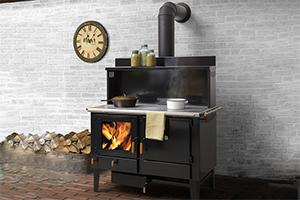
Probably the most important tool for any kitchen, as well as the most expensive, is the stove. You can cook over an open fire, either in a fireplace or outdoors in a fire pit, but it’s much easier to cook on a range. That’s why the fireplace was replaced by the cast-iron kitchen stove. They’re an expensive investment, but if you want to eat well, that’s probably an investment worth making.
Hand-crank Mixer
If there’s one appliance that real cooks use (as opposed to people who just warm things up), it’s got to be an electric mixer. They’re a versatile tool, especially for those who like to bake. Some things just about can’t be done any other way. But as a motorized tool, mixers use a lot of power. So I’d try to replace that mixer with an old-fashioned hand crank one and maybe a whisk.
Grater
The modern food processor is really just a motorized grater. Granted, it’s a lot faster and easier to work with, but it does the same job. I actually don’t have one, unless you count my coffee mill/spice grinder. Rather, I use one of those four-sided stainless-steel graters. It seems to do the job just fine.
Root Cellar
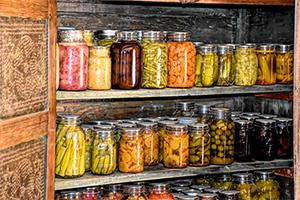
Maybe this is a bit big to be considered a tool, but an off-grid kitchen has to have some means of keeping food cool. Unless you’re powering your refrigerator off of solar panels, your best bet if probably to dig a root cellar. For that matter, even if you are powering your fridge off those solar panels, a root cellar will expand your storage greatly, allowing you to keep the vegetables you grow much longer, without having to can them.
Brick or Clay Oven
I suppose there are those who can survive without an oven. Actually, I know a lot of people who do. But I like to bake and a Dutch Oven just isn’t enough. So I would have to say a brick or clay oven (yeah, they’re the same, since bricks are made of clay) is an indispensable part of any off-grid kitchen.
The nice thing about this tool, is it’s something you can build as a weekend project. Once you’ve got it done, you can celebrate by making yourself some brick oven pizza.
Foot-powered Washing Machine
Washing clothes has to be one of the toughest household chores. Not only does it take a lot of water and energy, the clothes seem to reproduce. You never get done with the job. Doing physical work, which will make you perspire, only increases the amount of clothing you need to wash.
Running a clothing washer and especially a dryer uses a lot of energy. Therefore, it only makes sense to have an alternative method. If we don’t want to use an old-fashioned washboard, then probably the best bet is one of the foot-powered washing machines that are being made. They only hold about five gallons of clothing and water, so you’ll have to do the wash often; but it’s easier than other options.
Butter Churn
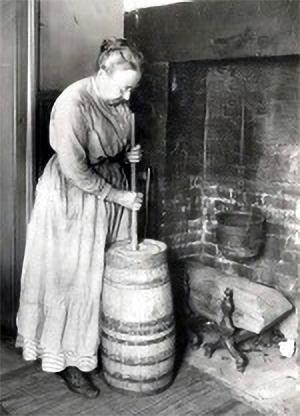 This one depends a lot on what you mean by off-grid living. If you really want to go off-grid and be as independent as possible, then you might want a butter churn, so that you can make your own butter. But then again, you could always buy it in the grocery store.
This one depends a lot on what you mean by off-grid living. If you really want to go off-grid and be as independent as possible, then you might want a butter churn, so that you can make your own butter. But then again, you could always buy it in the grocery store.
Old-time Campfire Coffee Pot
If there’s any kitchen appliance that’s used more than the electric mixer, it has to be the coffee pot. Many of us can’t start our day without a morning cup or two. That usually means making it in a drip coffee maker.
While the drip coffee maker doesn’t really use a lot of electricity, you could save some by boiling your coffee in the kind of pot that was used over a campfire. That’ll produce coffee that’s strong enough to float a horse shoe, and it’s good coffee at that.
Heating Your Home
Heating your home is a real challenge in an off-grid lifestyle. That is, it’s a challenge unless you live somewhere in the Deep South or Southwest, where you don’t have all that many days where it gets cold enough to have to heat it. You’re probably going to end up heating with wood, which means having the means to keep your wood pile stocked up and ready to go. It also means doing something to take that heat to other parts of your home.
Wood-burning Stove
The first and most obvious tool you’ll need for heating your home is a wood-burning stove. Yes, I call that a tool; it meets the definition of one. While it is possible to heat your home from a fireplace or even from a fire pit in the middle of the floor, a wood-burning stove is much more efficient. You’ll get more heat per pound of wood, than you will out of a fireplace.
Chain Saw
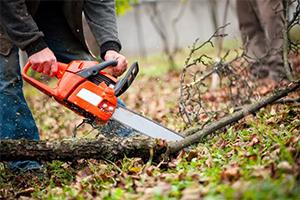
Since we’re not talking about a post-apocalyptic time, I have to start this section’s list off with a chain saw. You’re going to have to cut a lot of wood and that’s the most efficient way to do so. Fallen tree limbs and dead trees can both be converted to firewood, if you’ve got the means to cut it.
Something to Haul Wood With
You’re going to have to get all that wood home somehow. For most, that probably means a pickup truck. But you could also get by with a trailer, towed behind another vehicle. In the worst possible case, a two-wheeled hand cart would work, if you’re willing to make a lot of trips back and forth.
Bucking Saw
Depending on whether or not you have a chain saw, as well as how much confidence you have in that saw to keep running, you might want to have a bucking saw. This is specifically designed to cut those tree branches down to the right length for your wood-burning saw, before splitting it. There are other saws that can be used, like a bow saw, but the bucking saw is the time-tested best solution for the problem.
Maul or Log Splitter
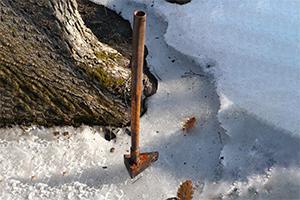 Those logs are not only going to have to be cut to length, but split as well. Split wood burns considerably better than logs, because one of the things that the bark of the tree does is to protect the tree from fire. So it’s a good idea to split smaller logs as well, not just the large ones.
Those logs are not only going to have to be cut to length, but split as well. Split wood burns considerably better than logs, because one of the things that the bark of the tree does is to protect the tree from fire. So it’s a good idea to split smaller logs as well, not just the large ones.
The most basic way of splitting firewood is with a maul. This is a wide-headed axe; the idea being that the wider wedge of the head will help with the splitting action. A regular axe is designed with a narrow head, so that it will penetrate better; but it doesn’t split wood well.
Of course, you can go much more efficient by buying one of the various log splitters that are on the market. Generally speaking, these require less physical force on your part, making the job easier. Some of them are also much faster to use, saving time.
Wood Caddy
Carrying split firewood in your arms is a great way to scrape up your skin and stick yourself with the occasional splinter. Better to use a wood caddy. This is a piece of hemmed canvas, with wood handles on both ends. Wood is piled on the canvas, then the two handles are brought together, making a nice, easy to carry bundle.
Bed Warmer
I don’t think I’d try heating my home off-grid, without having a bed warmer. Remember, your wood-burning stove is really only going to heat the living areas of your home; you’ll get minimal heat in the bedrooms. A bed warmer will make it so that your bed isn’t freezing when you get into it.
Contrary to popular belief, coals from the fire weren’t put in the bed warmer. They would make the sheets dirty. Instead, rocks were put in the warmer, which was then placed on the fire to warm it. A good bed warmer, filled with hot rocks, could warm up several beds.
Soapstones
Soapstone is an amazing material, with a number of very useful characteristics. But for our purposes right now, the characteristic we’re most interested in is that it has a high specific heat capacity. Our ancestors took advantage of this, warming soapstones in the coals of their fires, then using that as a portable heater, taking them in their wagons and even to church with them, wrapped in cloth, so that they could be carried.
A soapstone under a table, sofa or desk radiates heat. It just does it without having to be plugged into an electric outlet and using a lot of power.
Related: Confessions Of A Man Who Lived 37 Years Off Grid (AMA)
Growing Your Own Food
Different people have different ideas about what off-grid living looks like; or maybe I should say that they have different degrees that they are willing to go to, in order to live off-grid. Some are just concerned about their utility bills, while others are trying to become as self-sufficient as possible. This later group tends to grow a lot of their own food as well.
I don’t want to go into a list of things you have to have, if you’re going to raise your own food. That’s a pretty large list, all by itself. But I do want to mention a few things that you should have for processing that food.
Smoker
Of all types of food, meat is the hardest to preserve. It’s also the most necessary to preserve, as it begins to go bad faster than any other type of food. That’s why a smoker or smokehouse is so important. Of all the means of preserving meats, the only thing that’s simpler than smoking it is to turn it into jerky. But smoked meat is much more easily used in preparing meals than jerky is.
Grain Mill
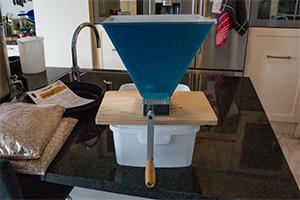 Few people bother growing their own grains, as growing them takes up so much space. But if you’re up to the challenge, growing your own grain is kind of like one of the last great barriers to becoming totally self-sufficient in your food production. Just remember that you have to dry that grain, and then you’ll need to grind it to make it usable. That’s where a grain mill comes in. Make sure you get a good one, especially if you’re planning on baking with the flour you produce.
Few people bother growing their own grains, as growing them takes up so much space. But if you’re up to the challenge, growing your own grain is kind of like one of the last great barriers to becoming totally self-sufficient in your food production. Just remember that you have to dry that grain, and then you’ll need to grind it to make it usable. That’s where a grain mill comes in. Make sure you get a good one, especially if you’re planning on baking with the flour you produce.
Juicer
Fruit can be eaten whole, canned or juiced. Of course, juicing requires having a juicer. What kind you decide to have will depend on the kind of fruit that you’re going to juice. Juicers for citrus fruit are considerably different from the juicers we would use for stone fruit. And don’t forget the cider press, if you happen to have an apple orchard.
Dehydrator
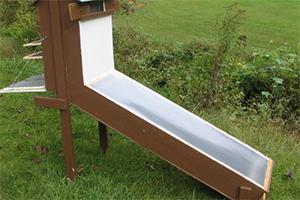 Dehydrating is one of the more efficient means of food preservation and one that can be used for just about any food. If you think about it, everything from grains to fish, via fruits and vegetables have been dehydrated at some time and in some place.
Dehydrating is one of the more efficient means of food preservation and one that can be used for just about any food. If you think about it, everything from grains to fish, via fruits and vegetables have been dehydrated at some time and in some place.
In order to stick with the off-grid lifestyle, it would probably make more sense to have a solar dehydrator, rather than an electric one. Dehydration of food to preserve it actually started out as solar dehydration, long before the idea of While I’ve used an electric dehydrator for years, I can definitely see the advantages of going solar.
Related: How I Survived Alone for 10 Months Living Off the Land
Making Repairs and Other Projects
When we talk about tools, the first thing that comes to my mind are the tools in my workshop. Up until now, I’ve focused on other types of tools; but I don’t want to forget about them. Like most people who make and repair things, I depend heavily on power tools. But if I was living off-grid, I’d have to curtail my use of power tools, relying on hand tools whenever I could. While powering my tools would be a priority in my mind, they are heavy power consumers, so I’d need to use them wisely.
Multimeter
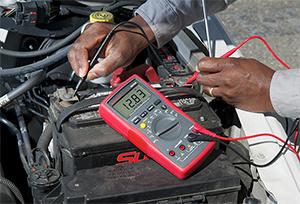
If anything happens to your off-grid power system, you’re going to have to have a multimeter, otherwise known as a volt-ohm meter to troubleshoot it. These handheld meters provide a means of measuring voltage output from your panels or wind turbine, checking the integrity of connections, check the charge of your batteries and measure current flow. Get a good one, so that it has the most versatility.
Saws
Other than the cordless drill, probably the biggest category of electric power tools in any workshop are various types of saws. I’ve got at least five different types of power saws in my workshop and I’m still missing some.
Saws are big power consumers, especially stationary power saws. They tend to have large motors, as you need those large motors to provide enough power to cut through material, especially thick, hard materials. If you’re going to build anything, you’re going to need saws.
When it comes to manual saws, don’t just plan on having one saw for everything. There’s a reason why there are so many different types of saws out there; and that reason is that they do different things. I’ve gradually moved from the more traditional type of saw, which cuts on the push stroke, to the Japanese pull saws. These allow for much greater accuracy while cutting.
Brace
I mentioned the drill a moment ago. For me, keeping my cordless drill charged would be a priority. Nevertheless, I’d try to do as much as possible with a brace and set of bits, rather than use the cordless drill. I also like using gimlets, which are essentially a drill bit with a T-handle. These were used in olden times for drilling small holes. They’re easy to use and quick, making them a great substitute in many cases for that electric drill.
Wrenches & Ratchets
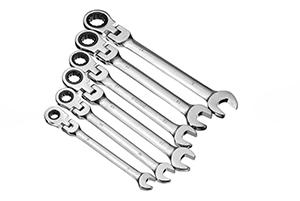
These are the basic mechanic’s tools. Just about anything mechanical that you’re going to have to repair is going to need nuts and bolts removed. Having a good set of ratchets, sockets and wrenches just makes sense.
Today, more than ever, you’ve got to have SAE and metric sized wrenches and sockets. As a country, we are in the process of transitioning from SAE to metric, so you never know what you’re going to have to deal with on a piece of equipment. But the newer it is, the more likely it is to use metric hardware.
Honing Wheel
The old-fashioned honing wheel is one of the great tool inventions of all times. It can be used to put a fine edge on any edged tool and it can do it much more quickly than using a wetstone. While you may still want to keep a wetstone around for your knives, the honing wheel will be especially important for your axes, chisels and other cutting tools.
You can actually still find these fairly easily in many parts of the country. Most are old ones; but they aren’t really considered to be collectible, like many old tools are. So the prices are fairly good.
Saw Tooth Set
Most saws have the teeth set to either side of the body of the blade. This is so that there will be some gap between the material being cut and the side of the blade, reducing friction. Without the teeth being “set” to the sides like this, it would be virtually impossible to cut anything with the saw.
To sharpen a saw, the teeth are usually brought back into alignment with the body of the blade, before it is sharpened. The actual sharpening can be done with a file or stone, depending on the blade. Then, once the teeth are sharpened, the teeth need to be “set” again, with alternate teeth offset to opposite sides. That requires a saw tooth set, a specialty tool that you might have a little trouble finding.
What About You?
This is my list, which I’m sure isn’t complete. What else do you thing should be part of your off-grid tool kit? What did I miss? Are there any specialty tools which you would think could make things easier?
You may also like:
Best Ways to Heat Your Off-Grid Home This Winter
Easy to Build Root Cellar in Your Own Back Yard (Video)
Prepping on a Budget – How To Get Survival Supplies When You Have Almost No Money
The Best 5 States for Living Off-Grid
How To Make Money Off Grid: Making A Living From Your Homestead

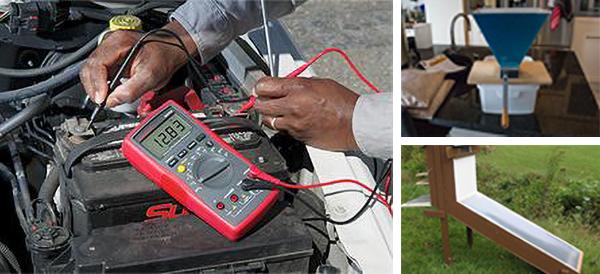














We already do a lot of this article….produce most of our power (solar), heat with wood, etc. The ‘tool’ I don’t see mention which I consider most valuable to us is a small tractor, preferably 4×4.
We started 35 years ago with a 22hp Yanmar, went to a 33hp New Holland in 1998, and to a 41hp Yanmar in 2011, as finances permitted the changes. I feel like the most recent is now the right one for us. A log winch on the back makes it fairly easy to skid out timber and firewood from our 60ac woodlot. The bucket(s) (have two different ones) and pallet forks on the front end loader (FEL is the most valuable addition to a tractor) move all kinds of materials, firewood, etc around the place. Quite simply, we’d be lost without our tractor.
I would definitely include either a come-along or a block and tackle. While not a necessity, they can make life easier on the heavy lifting.
if you have a way to heat water, consider a french press for coffee. no extra power use as the ground coffee is placed in the bottom, the hot water added, and after waiting a few minutes, the press is pushed thru the coffee water, capturing the grounds in the bottom. if you grind the beans to dust, you’ll get some “mud” in the bottom of the cup. it’s great fertilizer for your plants.
I learned years ago when working cattle and hunting, put a pot of water on the fire, when it boils, add grounds and move off the fire. We still do that when camping. Happy New Year.
I was thinking about this as soon as coffee was mentioned. I use one now, it makes the best coffee ever!
A washboard and hand operated wringer for keeping your clothes clean. Also wash tubs.
There is a device that makes washing clothes much easier than using a wash board.It is a Lavario.
They are a little pricey but work well,especially if you have kid power.
Washtubs and a washboard and hand wringer.
Better add the following: Water purifier, shovel, pick, hammers & knives.
It takes a lot of time and talent to be able to use well, but, in a prolonged ordeal a forge (blacksmith forge) would become a gold mine to some folks.
Isn’t the correct spelling whetstone not wetstone?
If you put water or oil on a whetstone it lubricates and helps clean it. Some are designed to be used (wet) and many folks use the term interchangeably though a dry stone is not a wet stone, but a wet stone is a whetstone.
What you need is a 9 pound hammer and a set of Dykes (war plars we call ’em in Texas).
A specialty tool that could be a real help off-grid is an Emergency Well Tube (emergencywelltube.com). It can be used to draw water from a drilled well without electricity. It’s a modern design of granny’s old-time galvanized well bucket.
yes! Great advice. May the reed never fail you!
Stove fan
From Wikipedia, the free encyclopedia
Thermo electric gen.gif
Stove fans are small fans that are usually set on top of a wood-burning stove, although they can be put on top of anything warm, like an oven. A stove will slowly radiate heat into the surrounding room, but it can take a long time for this to warm up a room. A fan will make air move past the stove and into the room, which will make the room warm up much faster. (This type of heat is called “convection.”)
Although any kind of fan can help warm move air around a room, this type of stove fan is placed directly on the top of the stove. You don’t plug it in, and it doesn’t have any batteries. Instead, the heat from the stove itself causes the fan to move.
There are two main ways a stove fan can work:
a thermoelectric generator, where a large-enough difference in temperature between the base of the fan (which sits on the stove) and the top of fan (which is cooled by a heat sink) causes a thermoelectric generator (which has a set of doped semiconductor elements, one being a P-type element and the other being an N-type element) to make a small electric current. This small current drives a small, low-torque motor.
a Stirling engine, where the heat makes the gas in a cylinder expand, which pushes a piston. The air cools down as the piston reaches the top of the cylinder, and the air contracts. The piston’s movement causes the fan to move via a crank.
While some folks may be able to kluge together a system to recharge their electrical devices and perform other tasks around the old homestead, I would suggest that concentrating on acquiring hand tools is a more valuable application of your time and money.
Chain saws are a wondrous 20th century product. They make an arduous task significantly easier but when the gasoline has turned to jelly and electricity is a tale with which to astonish young ‘uns it is the handsaw and axe that will provide the wood to cook your food and heat your shelter.
Instead of spending a couple of hundred bucks on a really nice Steihl chain saw, I would recommend getting a two-man hand saw and a double bitted forest axe..
Of course if you have excess funds, go ahead and buy the Steihl chain saw. It will be great until the end of the world.
You can still make drip coffee. Just put the grounds in the basket of your regular coffee maker. Instead of pouring cold water in the water cell, just pour boiling water over the coffee grounds allowing it to drip down into the pot. That’s how I made coffee during one of our electricity blackouts this past fall. Tastes exactly the same as the stuff you brewed up.
Cowboy coffee was always too strong for my tastes. YMMV.
Agreed, but, I’ll take the cowboy coffee or use a percolator. That’s what we grew up on.
two-man saws are just as good as a chainsaw, without the stench, expense, and hospital stays for the klutz who screws with them. For a fast job, there’s a small electric 12 inch that works. For peace and quiet, two sizes of bow saws, and one homemade that was probably cut and put together before my father was born. Blades can be cut from heavy gauge sheet metal, bolted in place. Try that with that Steihl 🙂
If you are going to invest in a metal stove for home use, I believe it is a better use of your money to invest in a stove capable of burning coal. You can burn wood in a coal stove. You cannot burn coal in a wood stove. In an EOTW situation, coal may once again become the chief source of BTUs, especially if you live in an area where coal is now or has been mined in the past.
You can wash small batches of clothing quite nicely with a five gallon plastic bucket with a lid and an ordinary toilet plunger. (don’t use the plunger you used the last time your toilet was stopped up) put clothing, a small amount of soap (most folks use way to much soap) and add water to cover the clothing. Put the lid over the plunger (after you have cut a hole just large enough to admit the plunger handle) and put the lid on the bucket. Plunge up and down sufficiently long enough to clean them.
Two people can wring clothing more efficiently than one person.
Most clothing doesn’t need to be washed as frequently as we do here in 21st century USA. Turn your outer clothing inside out and hand it on a clothes line outdoors in the sunlight. Only wear it every other day. If you don’t actually get something on the clothing, you can probably wear it like that for a month before it begins to need washing. If you get something on the outside, just sponge wash it with just a drop of soap. Obviously if you fell down in the hog pen, your clothes are going to need a good washing.
You don’t need any special equipment to dry foods in the sun. I dry persimmons every year using solar rays to do the drying. I lay the fruit on baking cooling sheets with 3/8 inch squares. Half inch squares were just too big and allowed fruit sometimes to drop through. I use gauze picnic tents to protect the drying fruit from insects. Put them out in the sun during the day and take them in at night. Takes about three days, depending upon how many hours of sunlight we get during those three days, to dry the fruit to the consistency that I like. I think my total investment is less than $25.
The problem with a bed warmer isn’t whether it will catch the bed on fire but instead will the wife let you keep her.
I am so thankful for this resource. I have been reading off-grid living blogs and websites and came across a post from an author named Ray who was sharing about how to set up your house on the grid, but also in case of emergencies or if you just want to be prepared for the unknown.
Biggest one of all missing from this article is cast iron. Especially a Dutch oven. You can cook on an open fire, bbq pit, or wood heater.
Thank you for the tips on off-grid living some decades ago. Your address, fingerprints, bank details, Amazon purchases, etc. are already in the Cloud. To get off the grid start with trading your Smart TV for a B&W and your Cellphone / Computer for an Abacus. Cash only in small, unmarked bills.
Alternate plan: Store extra food for tomorrow’s allies. Love your neighbor with a bag of beans.